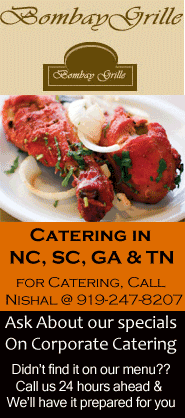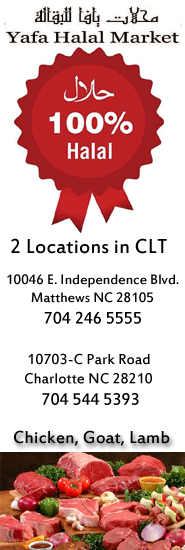|
|
|
|
|
|
Milan is one of the largest cities in Italy, located in the plains of Lombardy. It is the capital in the Province of Milano. The municipality (Comune di Milano) has a population of 1.3 million. The Milan metropolitan area, depending on the specific definition, has a population ranging from 2.9 to 7.4 million. The municipal border covers a relatively small area (about one-eighth that of Rome) because of the historical development of high density centres in agriculturally rich Lombardy.
Milan is renowned as one of the world capitals of design and fashion. The English word milliner is derived from the name of the city. The Lombard metropolis is famous for its fashion houses and shops (such as along via Montenapoleone) and the Galleria Vittorio Emanuele in the Piazza Duomo (reputed to be the world's oldest shopping mall). The city hosted the World Exposition in 1906 and will host the Universal Expo in 2015. Inhabitants of Milan are referred to as "Milanese" (Italian: Milanesi or informally Meneghini or Ambrosiani).
The Olona river, the Lambro river and the Seveso creek run through Milan. Olona and Seveso run mostly underground.
Milan is one of the major artistic centres of northern Italy. Its chief landmarks include:
* The Duomo, the world's largest collection of marble statues with the widely visible golden Madonna statue on top of the spire, la Madunina (little Madonna), the symbol of Milan.
* Teatro alla Scala. Milan is also one of the most important centres in the world for Opera lirica, with his famous Teatro alla Scala (La Scala).
* The Galleria Vittorio Emanuele II, a large, covered arcade linking the Duomo's piazza with the Teatro alla Scala.
* The Castello Sforzesco
* The Basilica of Sant'Ambrogio
* The Palaeo-Christian Basilica of San Lorenzo
* The Biblioteca Ambrosiana, containing drawings and notebooks by Leonardo da Vinci among its vast holdings of books, manuscripts, and drawings, and is one of the main repositories of European culture. The city is also the home of the Brera Academy of Fine Arts.
* The church of Santa Maria delle Grazie, which houses one of the most famous paintings of Leonardo da Vinci, The Last Supper (L'ultima cena or Il cenacolo).
* The church of Santa Maria presso San Satiro, with a famous trompe l'oeil traditionally ascribed to Bramante
* The Cimitero Monumentale di Milano.
* The Pinacoteca di Brera, Pinacoteca Ambrosiana, Poldi Pezzoli, the Bagatti Valsecchi Museum and the Musei del Castello galleries, which host a great number of pictorial masterpieces.
The city has a large international airport known as Malpensa International Airport (MXP), located near the industrial towns of Busto Arsizio and Gallarate and connected to the downtown with the "Malpensa Express" railway service (from Cadorna Station and central station ). Malpensa was designed by the famous Ettore Sottsass. Milan also has the Linate Airport (LIN) within the city limits (for European and domestic traffic), connected with bus line 73 (from S. Babila). A third airport is Orio al Serio (BGY), close to the city of Bergamo. Vergiate, Venegono, Bresso, Voghera and Montichiari are additional airports in the region.
Milan has 3 subway lines (M1 – red, M2 – green, M3 – yellow) and the system, called Milan Metro – "La Metro", running for more than 80 km. There is also a light metro-service, "Metrò S. Raffaele", connecting the San Raffaele Hospital with Cascina Gobba station (M2). Extensions of lines 1, 2 and 3 are under construction, to create more than 15 km of track with 10 new stations. Line 5 is also under construction, to be finished in the first half of 2012. Lines 4 (linking downtown with Linate Airport) and 6 are in planning stages.
The "Passante" is a railway tunnel under the city centre used by suburban trains, and allow passengers coming from suburbs a direct interchange to the three (soon to be four) metro lines at Garibaldi, Repubblica, Porta Venezia and Rogoredo stations.
Greater Milan also has one of the most extensive tramway systems in the world, with more than 286 km of track, and 20 lines.
Milan also has four trolleybus routes; included in the fleet are ten air-conditioned Cristalis trolleybuses.
Ninety-three bus lines cover over 1,070 km between them. The local transportation authority (ATM) transported more than 600 million passengers in 2003 .
Milan is the second railway hub of Italy, and the five major stations of Milan, amongst which the Milan Central station, are among Italy's busiest. The first railroad built in Milan, the Milan and Monza Rail Road was opened for service on August 17, 1840.
High speed train lines are under construction all across Italy, and new lines will open from Milan to Rome and Naples, and from Milan to Torino.
Other than the Central Station, High Speed Trains will sometimes stop also at:
* Milano Rogoredo (for trains coming from Bologna and Rome)
* Milano/Rho Fiera (from Turin)
* Milano Pioltello (from the planned high speed line from Venice)
The Suburban Railway Service ( "S" Lines, a service similar to the French RER and German S-Bahn), composed of eight suburban lines and ten more scheduled for 2008, connects the "Greater Milan" to cities such as Como and Varese. The Regional Railway Service ("R"), instead, links Milan with the rest of Lombardy and the national railway system. The "Passante ferroviario" is an underground railway serving a couple of "S" lines and is very much like another subway line (and is even marked as such on subway maps), except that it is connected to LeNord and Trenitalia suburban networks. See the map of the M (subway) + S (regional metropolitan railway) Network on msrmilano.com Go on
Like most cities in Italy, Milan and its surrounding area has its own regional cuisine. Milanese cuisine includes "cotoletta alla milanese", a breaded veal (pork and turkey can be used) cutlet pan-fried in butter (which some claim to be of Austrian origin, as it is similar to Viennese "Wienerschnitzel", while others claim that the "Wienerschnitzel" derived from the "cotoletta alla milanese"). Other typical dishes are cassoeula (stewed pork rib chops and sausage with Savoy cabbage and tomato sauce), ossobuco (stewed veal shank with tomato or lemon sauce), risotto alla milanese (with saffron, white wine and beef marrow), busecca (stewed tripe with beans and tomato sauce), and brasato (stewed beef or pork with wine and potatoes). Season-related pastries include chiacchiere (flat fritters dusted with sugar) and tortelli (fried spherical cookies) for Carnival, colomba (glazed cake shaped as a dove) for Easter, pane dei morti ("Bread of the Dead", cookies aromatized with cinnamon) for All Soul's Day and panettone for Christmas. The salame milano, a salami with a very fine grain, is widespread throughout Italy. The best known Milanese cheese is gorgonzola from the nearby town of that name, although today the major gorgonzola producers operate in Piedmont.
|
|
|




|
|
|
|
|